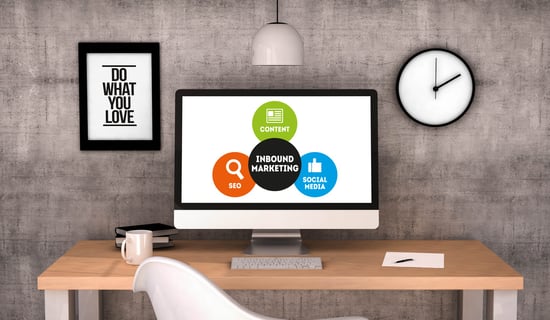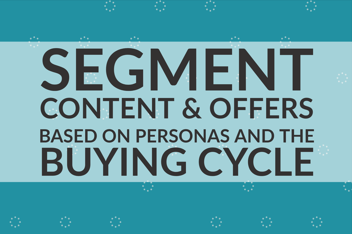The 10 Essential Steps In An Inbound Marketing Campaign

Still wondering just how an inbound marketing campaign works, and all of the steps involved? Or do you just a concise way to present it to others in your company? We’ve boiled it down to 10 steps.
From start to finish, here is a look at how an individual inbound marketing campaign works. (You can download this information in checklist form here.)
1. Identify your inbound marketing campaign’s audience.
No marketing campaign is going to succeed if you don’t know who you are trying to reach. So the first step in your inbound marketing campaign is to identify your target market or customer persona. The rest of your campaign will be impacted by what you know about your audience. (JONES partner HubSpot does a great job of explaining how to define your customer persona in this blog post: Everything Marketers Need to Research and Create Detailed Buyer Personas.)
2. Set your inbound marketing campaign’s goals.
Determine what you want your inbound marketing campaign to achieve. How much website traffic, how many leads, and how many sales (or how much revenue) do you expect to be able to generate? Setting SMART goals, based on industry benchmarks, can help you be sure you will have tangible results.
Two calculators that you can use to help in determining goals and working together with the sales department (because marketing can’t do it all alone):
3. Identify your long tail keywords.
What words and phrases do your prospective customers use when they are searching for information about the solutions you offer? Those are the long tail keywords you should be incorporating throughout your campaign.
Choose words or phrases that are descriptive, remembering two inverse rules: the longer or more obscure the phrase, the fewer searches that will be conducted with that phrase, but the shorter and more general the phrase is, the more competition you will have for top search engine rankings.
Tools to use:
-
On-Page SEO Planning Template: While this is targeted toward web page copy, text and markup, it can also be used for reviewing how you use your long tail keywords in blog posts and on landing pages.
-
Metadata, Schema & Rich Snippets Cheat Sheet: This short guide will help you understand ways of enhancing the appearance of your web pages—including blogs and landing pages—in search engine results lists.
4. Create your campaign offers, calls-to-action and landing pages.
Gee, doesn’t that sound simple? This is the meat and potatoes part of your inbound marketing campaign, and will involve developing a content strategy (or at least an abbreviated version of one for this individual campaign) that includes related offers for each stage of the sales funnel. Here is a look at some ideas for downloadable content offers you could create for lead generation: 25 Offers To Appeal to Every Stage of the Sales Funnel.
Each offer also needs calls-to-action and a landing page. The calls-to-action are those buttons or ads that link directly to the landing page; the landing page is where a visitor is converted into a lead by filling out a form, providing contact information in exchange for the offer.
Guides to help you:
5. Plan and build your automated lead nurturing workflows.
Inbound marketing campaigns may be built on the foundation of content and downloadable offers, but it is the automated lead nurturing workflows that keep the wheels turning moving leads through the funnel toward a sale.
The automated workflows are kicked off any time a new lead provides contact information to download one of your offers. A preset series of emails offers them additional offers related to the original one that gradually become less general and informational and more targeted toward leads in the consideration and decision-making stages.
Guidelines and tools to streamline your lead nurturing workflows:
6. Write a blog post (or several posts).
Your business blog is the central hub for your inbound marketing efforts. All of your campaigns, not just this specific one, will rely on your blog to help bring visitors to your website and serve as a conduit into the landing pages for individual offers.
Plan one or several blog posts that correspond with the topic of your inbound marketing campaign. Each post should include a call-to-action for the offer or offers you are targeting with this campaign.
Tips to remember as you write your blog posts:
-
Vary the format of your blog posts to appeal to a wider audience.
-
Focus on information that is useful to the reader and avoid being too product-centric
Ebooks and tools to make your business blog the best it can be:
7. Share your blog post and your offer on social media.
It isn’t enough to have an offer, and blog posts written about it, because you will want more traffic that just want comes to your website through search. So use your company’s social media accounts to promote your blog posts. Set a schedule to promote each post several times over the hours, days and weeks after it is posted to your site.
You can also directly share your offer, with a link to the landing page.
Set and track your social media posts: Social Media Scheduling Worksheet.
8. Consider paid search and other channels.
Inbound marketing relies largely on organic search, blog subscriptions and unpaid social media to reach prospective customers, but don’t rule out other options. Paid search, social media advertising (promoted posts and side bar ads), email blasts and other ways of reaching your target marketing should also be considered. Just be sure you are measuring the effectiveness of these channels.
9. Track your URLs with closed loop marketing.
The key to understanding the effectiveness of your inbound marketing campaigns is to track how website visitors and leads come to your site, and the path each lead follows toward a completed sale. Closed loop marketing uses tracking URLs to do so.
For each channel through which you promote a landing page (blog, social media, paid search, email), use a specific tracking URL in the link, allowing your website to report the effectiveness of each channel.
More on how this type of tracking can improve your marketing: Introduction to Closed Loop Marketing.
10. Report on your inbound marketing campaign results.
By using closed loop marketing, you will have specific results at hand to report back to your boss. Use your figures to determine which channels were most effective, which had the highest ROI, and which could be dropped in subsequent campaigns.
And remember, also, that your boss may want to know more than the minutiae of website traffic counts and landing page conversion rates. Be sure your report also includes these: 6 Marketing Metrics Your Boss Actually Cares About.
Obviously, each of those steps is much more complex than it looks in this post. That’s why we address all of them throughout the Inbound Accelerator blog (check the “Popular Topics” directory to the right) and with the variety of in-depth ebooks and tools linked in each step.
But if you want these steps in a checklist format you can use to track each campaign your team is working on, download it here: Inbound Marketing Campaign Checklist.
-1.png?width=1652&height=294&name=Jones(RGB)-1.png)












